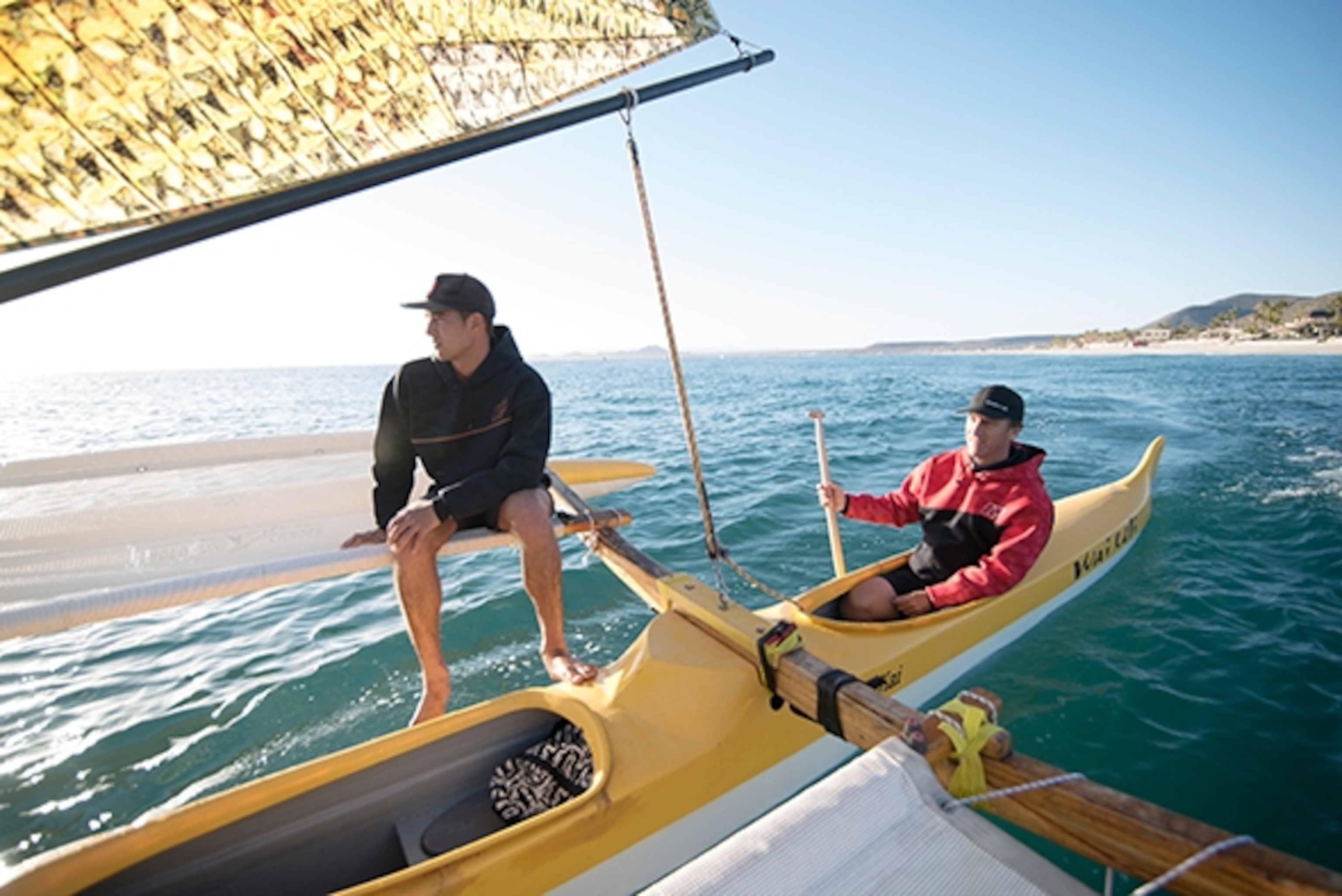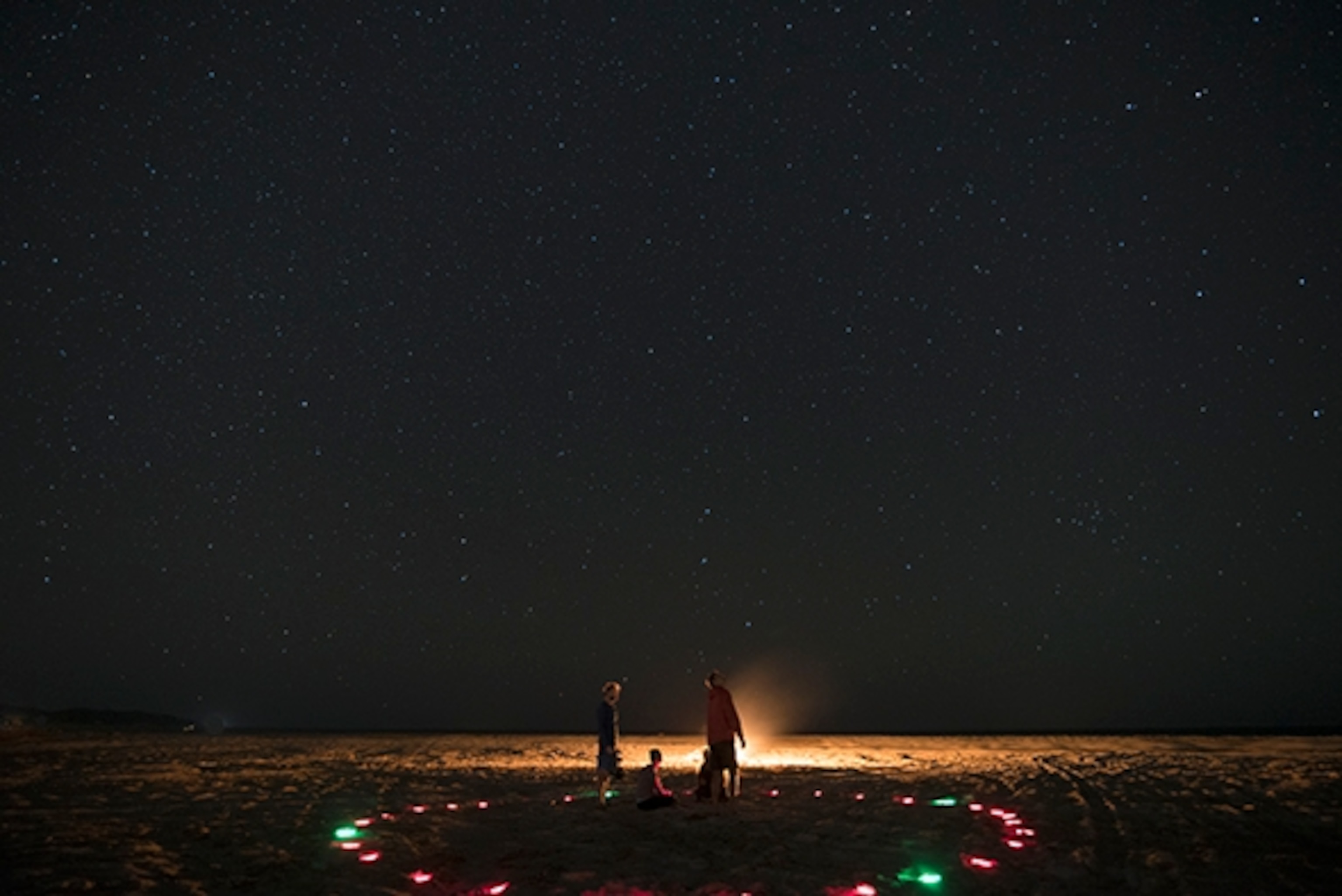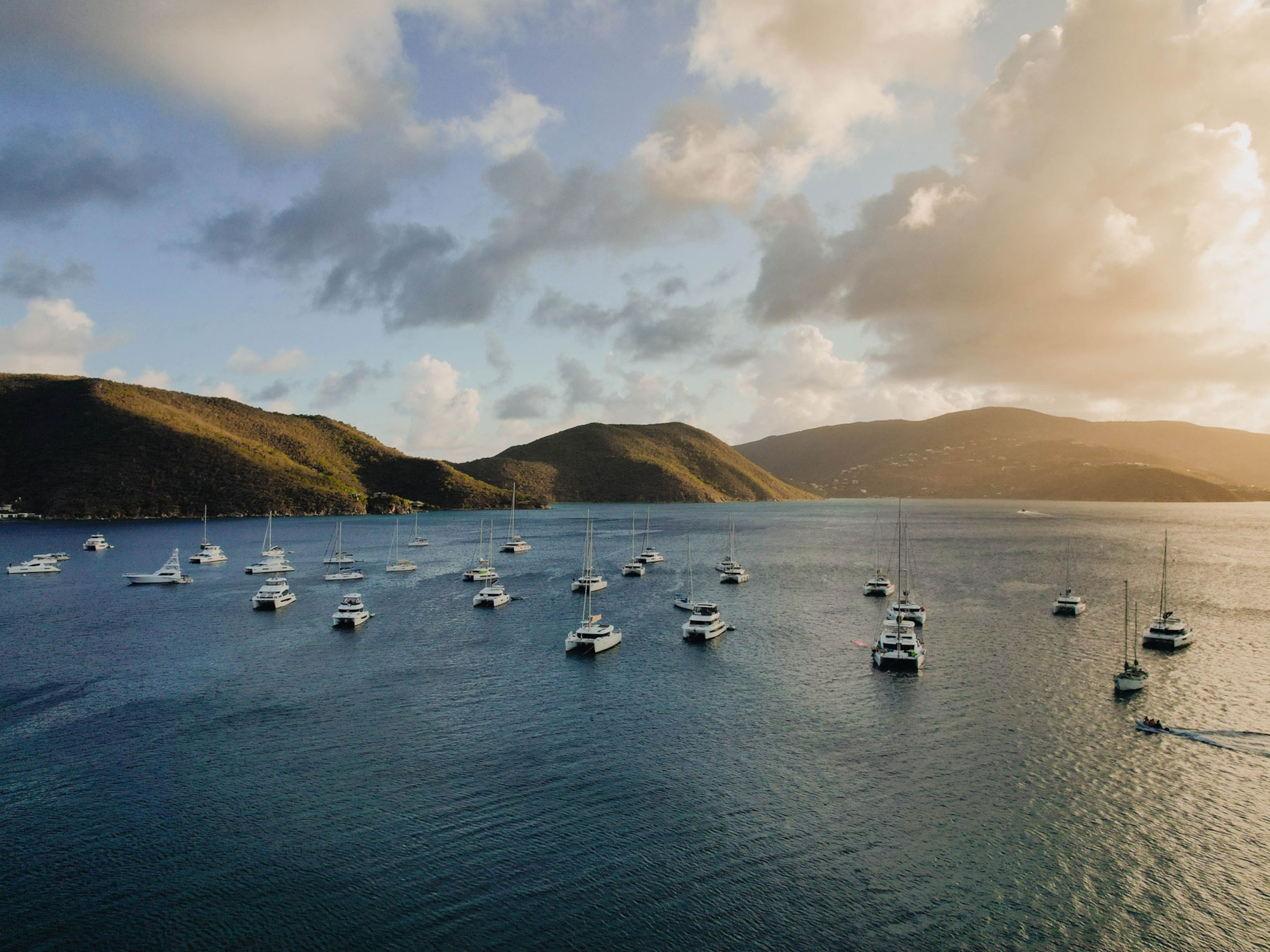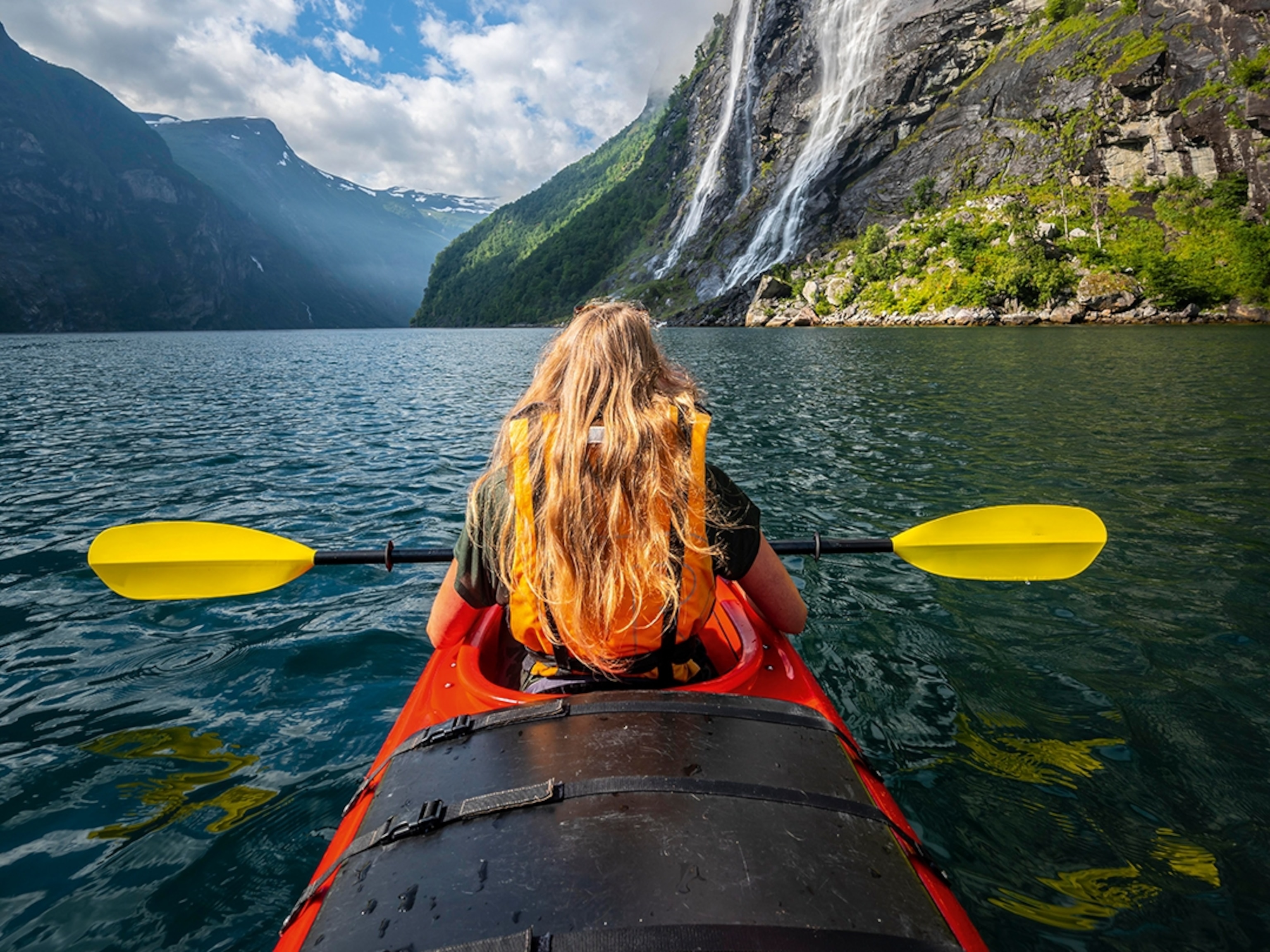Navigating Baja: Bringing Hawaiian Sailing to Mexico – Dispatch #3
In the dry cactus filled landscape of northern Baja, the hum of a diesel truck echoes as it begins to tow a carefully packed load into the desert sun. This trailer in tow has made it here all the way from the Hawaiian island of Kauai via Santa Cruz, California. Just before we leave every person scrambles throughout the compound residence for their last minute gear—sunglasses, hats, radios—no one is sure what he or she will need for the day’s activity. As we pile into the assortment of vehicles, those who don’t welcome the possibility of getting stuck quickly make a dash for the truck with four-wheel drive. Finally the caravan is underway as we make the ten-minute trek through two arrojos and power through the last hundred feet of unpacked sand to reach our destination at the edge of the Vermilion Sea, also known as the Sea of Cortez.
Many hands make light work as we begin to remove the mass configuration of straps and padding that have hopefully protected our package over its long commute. As each piece gets unloaded and laid out onto the sand, we count our luck as nothing appears to be significantly damaged. Each part of the puzzle has a name and after translation it becomes obvious that what we are about to assemble has a correlation to the human form. The kino, “body,” is the main hull where all of the paddlers will sit. The kino has a manu ehu, “nose,” and a manu hope, “stern.” The word manu is the Hawaiian word for “bird,” which gives the clue that this watercraft was designed to fly with the wind.

On this first afternoon of sailing, we are blessed with a light 10- to 15-mile-an-hour offshore wind just enough to practice the basics of steering and tacking this traditional rig. In Baja, the wind moves in a reverse fashion to what I am used to in Hawaii. The air over the ocean is warmer than the air over the land causing a difference in pressure. As the high pressure over the land shifts toward the low pressure over the ocean, the movement of that air creates offshore wind. This cycle results in extremely turbulent winds just before sunrise, but as we would soon find out the following morning the wind is not the only force of nature to be encountered at dawn.

Standing on the cold sand after a night’s rest the crew readies their warm gear for an early morning sail. In the middle of the sail plan briefing, the conversation halts to a silence as a tremendous exhale breaks the surface of the ocean. Everyone whips his or her head around to see the unmistakable mist left from multiple whale blowholes only 50 feet from the shoreline. In a panicked frenzy we race to get the canoe in the water before the humpback whales leave our sight. Making a beeline to the last known location we find only the remnant of a slick on the surface signifying the close proximity to the creatures below. Like a game of cat and mouse, our crew continues to spot several pods of whales all around us and as we try to close the gap several times, we are limited by the winds direction and our possible points of sail.

Upon returning to shore we celebrate the morning with huevos rancheros and trade stories with the local kite surfers who are intrigued by this new expression of wind-powered fun. I explain to them that this sailing canoe is unique to Hawaii and people have been sailing them for many generations. In Captain Cook’s journal, he wrote that upon entering Kealakekua Bay in 1778, he and his crew watched as over one thousand sailing canoes filled the ocean around them. Our time spent sailing in Baja is a testament that Polynesian seafaring technology continues to grow in new corners of the world. If there is one lesson, it is that the ocean is not something that separates us, but it is the bridge that connects us all.
Read all the “Navigating Baja” dispatches.
The Adventurists blog series “Navigating Baja” is sponsored by OluKai, which provided footwear for this adventure.
- National Geographic Expeditions





